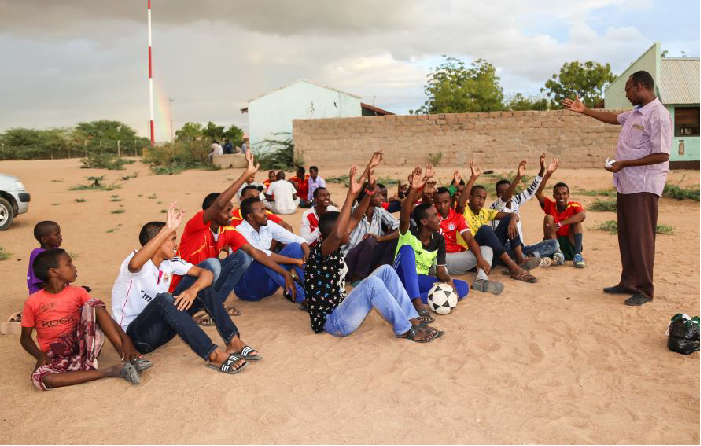A Good Facilitator is Hard to Find: This Might Help
Mar 26, 2018
As measures to counter violent extremism (CVE) are complex and unproven, development practitioners must pay attention to any and all variables that even appear to be important. One of those key common factors is the importance of a good facilitator. Luckily, the field of public health has much to teach us on this topic.
The effect of a good facilitator is evident across evaluations of CVE interventions. To take just a couple of examples, the Youth Justice Board’s Process Evaluation of Preventing Violent Extremism Programmes for Young People remarks that “the success of the activity hinged largely on the skills, motivation, and knowledge of the facilitators.” In “More Than a Game”: The Impact of Sport-Based Youth Mentoring Schemes on Developing Resilience toward Violent Extremism, the authors reflect that “good coaching was identified as being critical to fostering a sense of trust, rapport, and respect.” These observations align with DAI’s experience as CVE practitioners, in that we often struggle to find suitable local representatives to implement programming.
In response to this long-standing challenge in their own field, public health practitioners often assess facilitators for credibility (perceived authority on the topic), adherence (delivering the intervention as designed), and competence (quality of delivery). With CVE programs increasingly adopting a public health approach, there are a variety of relevant indicators and tools that could be adapted by CVE practitioners.
As in public health interventions, adherence, competence, and credibility are key to effective facilitation of CVE programs, whether it is a coach teaching kids to play a sport, a religious leader facilitating community dialogue, or a teacher delivering a lesson on violent extremism. Is the coach effective at creating a safe space for young people to learn from one another? Is the religious leader able to relate to youth and perceived to have moral authority on the issues that matter to them? Can the teacher create an atmosphere conducive to relationship building and personal growth? The answers to these questions are good indicators as to whether a CVE intervention will achieve its objectives.

A youth mentor in Kenya leads a discussion on countering violent extremism. Photo credit: DAI.
So what can we do to ensure our facilitators are credible, adherent, and competent?
Credibility
First, we need a sound understanding of the local context and the violent extremism dynamics we are attempting to address. Armed with this understanding, we can assess what constitutes credibility in the eyes of our target audience. For example, if we are working with young people, who do they view as credible in their communities? The DAI-implemented USAID Kenya Niwajibu Wetu Program (NIWETU) addresses these issues by working with local partners to conduct mentorship needs assessments with community youth. These assessments typically include focus group discussions and interviews with local youth to better understand why the community is struggling with violent extremism, what types of programming young people might need, and who should be delivering it. The NIWETU team then designs programming to address the needs identified and engages facilitators that young people themselves deem credible on the topic at hand.
Adherence
Facilitators need to thoroughly understand the objectives of the activity they are working on and be trained how to implement it faithfully. Consistency of implementation is particularly important to program evaluation: If facilitators vary widely in their delivery of the intervention, evaluators will be unable to conclude if that intervention did or did not achieve its intended outcomes due to poor program theory or poor program implementation. To address adherence among facilitators working with out-of-school youth in Garissa, for example, NIWETU and the Garissa Mediation Council developed a training guide with the future mentors and mentees themselves. This collaborative process ensured the guide was based on the actual needs of young people, and that facilitators fully understood the activity and how to implement it.
Competence
Facilitators benefit from general training on CVE, leadership, and facilitation techniques. When it comes to facilitation techniques, for example, CVE program evaluations often find that results hinge on the facilitator’s ability to create a safe and open environment. Many CVE programs develop context-specific CVE skills trainings, but there are also a growing number of general resources for practitioners. In December 2017, the Radicalisation Awareness Network published a handbook on CVE training programs, which offers guidance on how to select and train facilitators, and guidance to help facilitators put their skills into practice.
If we are seeking to be more systematic in the training and evaluation of facilitators, organizing our thinking around the principles of credibility, adherence, and competence will allow us to utilize decades of public health research and tools on these topics.